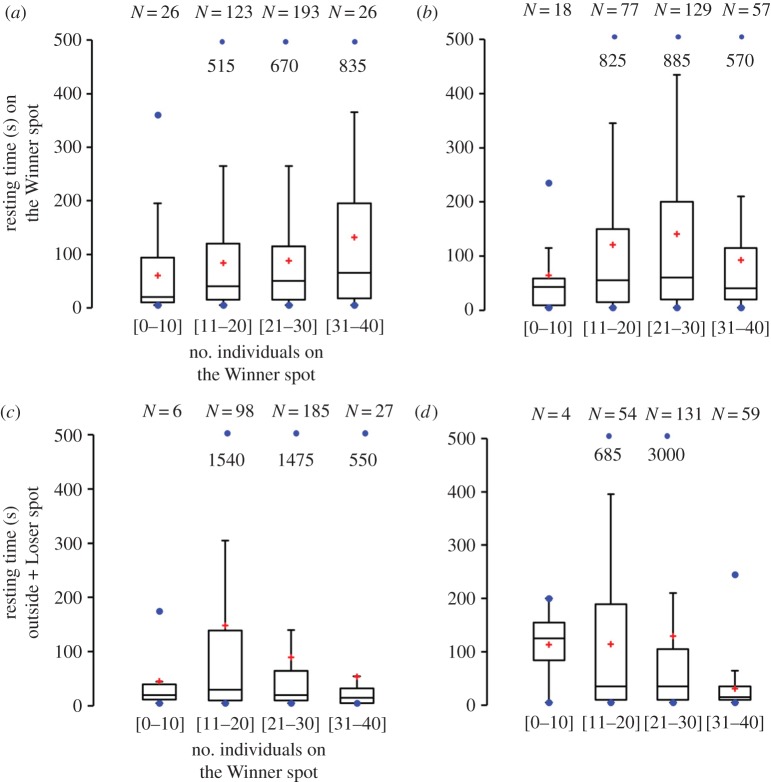Figure 5.
Evidence of attractive and retentive effects of the group on individual larval behaviour. Resting time (s) of tracked L. sericata larvae on the Winner spot (a) and outside + Loser spot (c) as a function of the number of individuals on the Winner spot. Resting time (s) of tracked C. vomitoria larvae on the Winner spot (b) and outside + Loser spot (d) as a function of the number of individuals on the Winner spot. For all boxplots, the first 10 min were removed to reach a plateau regarding the accumulation of individuals on the Winner spot (figure 2b). The red crosses represent the means. N represents the number of elements. No significant differences were observed in all boxplots according to the species (KW tests: (a) KW = 4.99, p = 0.17; (b) KW = 4.77, p = 0.17; (c) KW = 6.19, p = 0.19; (d) (KW = 13.73, p = 0.003, Dunn's test, p > 0.05 for all multiple paired comparisons). For trials in which aggregations were observed outside of either spot (L. sericata, N = 2; C. vomitoria, N = 4), the mean resting times of the individuals on the Winner spot were 75 ± 112 s for L. sericata and 17.9 ± 13 s for C. vomitoria. On the Loser spot, the corresponding times were 30 ± 22 s for L. sericata and 18.6 ± 10 s for C. vomitoria. The larvae spent less time on a spot when the number of individuals on the spot was low (means ± s.d. throughout the experiment: Winner spot: L. sericata: 6.8 ± 3.5; C. vomitoria: 2 ± 1.5; Loser spot: L. sericata: 3.7 ± 4; C. vomitoria: 2.4 ± 2) (for comparison, see values in the text regarding trials yielding a collective choice for one spot). (Online version in colour.)

